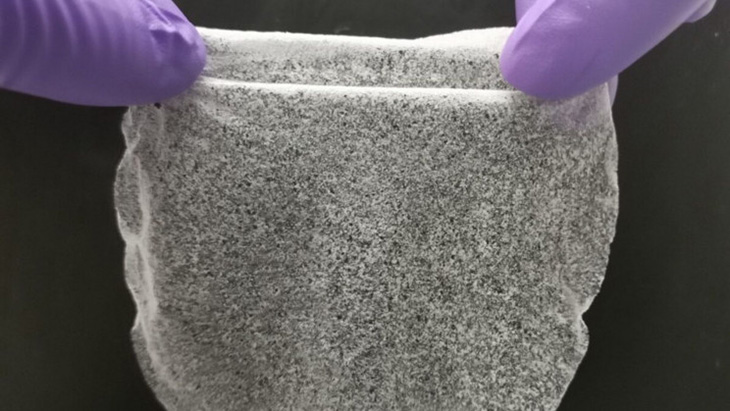
Over a third of the entire world’s population actually lives in drylands, or areas that tend to experience extreme water shortages. But it seems that now, scientists have created a solution that could maybe help residents in these types of areas get access to clean drinking water.
A team of researchers at the University of Texas at Austin produced a low-cost gel film that’s made of abundant materials which are known to pull water from the air, regardless of being considered the driest of climates. These materials that are used to create this reaction only cost $2 per kilogram – which is approximately 2.2 pounds – while one kilogram can produce ‘more than six liters of water per day in areas with less than 15% relative humidity and thirteen liters in areas with up to 30% relative humidity.’
This new research was actually build from previous research breakthroughs from the same team, such as the ability to pull water out of the atmosphere, as well as the application of that same technology to create self-watering soil. But, these technologies were originally designed for considerably high-humidity environments.
Professor of materials science and mechanical engineering in the Cockrell School of Engineering’s Walker Department of Mechanical Engineering, Guihua Yu, said, “This new work is about practical solutions that people can use to get water in the hottest, driest places on Earth. This could allow millions of people without consistent access to drinking water to have simple, water generating devices at home that they can easily operate.”
The researchers also used renewable cellulose and konjac gum, a common kitchen ingredient, as a main hydrophilic – attached to water – skeleton. The open-pore structure of gum is what speeds up the moisture-capturing process. Another design component was the thermos-responsive cellulose with hydrophobic – resistant to water – interaction when heated. This helps release the water that was collected immediately so that the overall necessary energy required to produce the water is diminished.
During other attempts to pull water from the desert air were found to be energy-intensive, while also not producing too much water. And while six liters of water may not sound like too much, the research team explains that creating thicker films or absorbent beds or arrays with optimization could actually majorly increase the amount of water they produce.
It’s Quite a Simple Method
The researchers go on to share that the reaction itself ‘is a simple one,’ reducing the challenges that come along with scaling it up and achieving mass usage.
Lead author of the paper and a former doctoral student in Yu’s lab, Youhong “Nancy” Guo, who happens to now be a postdoctoral researchers at the Massachusetts Institute of Technology, said, “This is not something you need an advanced degree to use. It’s straightforward enough that anyone can make it at home if they have the materials.”
Moreover, the film is flexible and can even be molded into many different shapes and sizes, all depending on the needs of the user. In addition, making the film requires just the gel precursor, which will have all the necessary ingredients poured into a mold.
Doctoral student on Yu’s team, Weixin Guan, who is also a lead researcher of the work, shared,
“The gel takes 2 minutes to set simply. Then, it just needs to be freeze-dried, and it can be peeled off the mold and used immediately after that.”
You can see the new research paper published in the Nature Communications journal.
What are your thoughts? Please comment below and share this news!
True Activist / Report a typo


